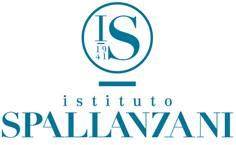Katia Parati
Lingua predefinita del sito
2016-06-23T10:18:58+00:00
She was born on the 28th of July in Milan. Graduating from the Italian Technical Institute “Galileo Galilei” of Crema (CR) as an IT expert she applied for the Faculty of Biological Sciences of the University of Milan and finished it in 1998 with honours.
In 1999 she did an internship at the lab of clinical chemistry analysis and Microbiology (Ospedale Maggiore of Crema) gaining the experience in the research of pathogenic bacterial strains from various biological substrates through cultural surveys, the analysis of glass slides and the use diagnostic kits.
In 1999 she also started to collaborate with The Italian Experimental Institute Lazzaro Spallanzani getting two scholarships, the first at the Seminology lab and the second at the Molecular genetics lab gaining experience in qualitative and quantitative analysis techniques of the semen material and in the field of animal molecular biology.
In 2000 she passed the State exam and in the very same year she got her biology degree.
From 2001 until 2009, working as a certified researcher at molecular genetics lab of the Italian Experimental Institute Lazzaro Spallanzani (CR), she gained experience in the field of traceability, genetic variability and in the study of the genetic expression in the animal reproduction.
From 2010 until 2014, being one of the main reference points in the genetic activity in
the department of aquaculture, she mainly researched the use of genetics to measure the genetic variability level in wild fish and breeding populations and the development of the protocols of assigning of family bonds, more specifically of the species involved in reproduction programs and in release programs in a natural environment, e.g. Sea Bass (Dicentrarchus labrax), Sea bream (Sparus aurata), trout (trota iridea (Oncorhynchus mykiss) sturgeon (Acipenser Naccari), blufin tuna (Thunnus thynnus)) e Carpione del Garda (Salmo trutta carpio).
Work experience
From 2010 until 2012 she was in charge of a scientific project (Region of Lombardy) n. 1220 – Salve the Carp – “The development of methods and tools for the protection of a species at risk of extinction: The Garda Lake Carp (Salmo trutta carpio)
In the same period, she was also scientific head of the Operative Unit of the European project Reprosel – “REPROduction protocols and molecular tools for mass spawning and communal rearing based SELective breeding schemes applied to multiple-spawning marine fish (FP7 / 2007-2013 No. 262.523).
Starting from January 2015 she became head of the Department of Aquaculture.
Since March 2015 she has been working as scientific head and coordinator of the project “Characterization of high-biological-value microalgae and model-based optimization of growth to upgrade the floristic facilities- MICROFLOWER” (Cariplo Foundation, duration: 2015-2017)
From March 2015 she is also scientific head of the operative unit of the project “MicroGate: Use of MICROalgae to mitiGATE nitrogen pollution from agricultural wastewaters” (Cariplo Foundation, duration: 2015-2017).
Main publications
-
Amadesi A, Frana A, Gandini LM, Bornaghi V, Parati K, Bongioni G, Puglisi R, Galli A (2015) “Comparison between primari sex ratio in spermatozoa of bull and secondary sex ratio in the deriving offspring”. Theriogenology, 83 (2), 109-205
-
Chavanne H., Parati K., Cambuli C., Capoferri R., Jiménez C. A., Galli A. (2012) “Microsatellites markers to depict the reproductive and genetic patterns of farmed gilthead seabream (Sparus aurata): illustration by a case study on mass spawning”. Aquaculture Research, 1–14;
-
Parati K., Chavanne H., Pozzi A., Previtali C., Cenadelli S., Bongioni G (2011). “Isolation and characterization of novel microsatellite DNA markers in the gilthead seabream (Sparus aurata)” Conservation Genetics Resources, Volume 3, Number 1, 83-85
-
Vandeputte M., Dupont-Nivet M., Haffray P., Chavanne H., Cenadelli S., Parati K., Vidal M.O., Vergnet , Chatain B., (2009). Response to domestication and selection for growth in the European sea bass (Dicentrarchus labrax), in separate and mixed tanks. Aquaculture 286, 20-27.
-
Parati K., Bongioni G., Aleandri R., Galli A., (2006). “Sex ratio determination in bovine semen: A new approach by quantitative real time PCR”. Theriogenology 66, 2202-2209.
